Part Three is all about the key role investment properties can play in your path to assemble your dream farm.
Just to keep you up to date, it is now February 2007 and we have 800 acres of land. My wife and I started this process in September of 2002 when we bought a house on 125 acres that left us with zero cash in the bank.
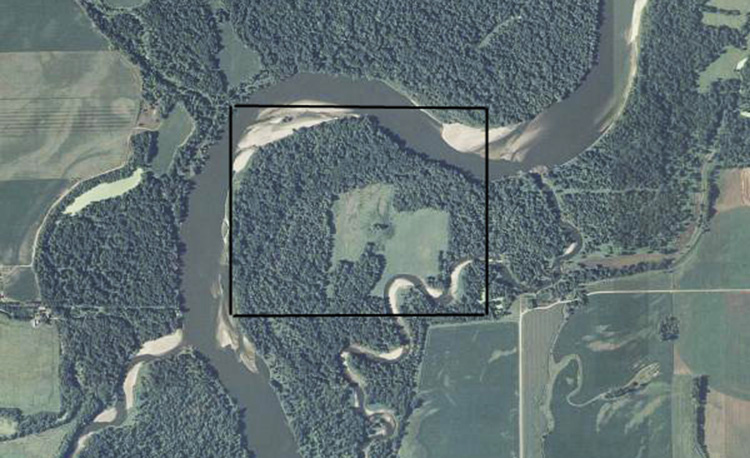
Here are the approximate property lines for the 160 acre island on the Cedar River. You can see the 60 yard wide side channel we needed to get across to reach the island.
BUYING OUR SIXTH PROPERTY
Purchase number six would make a book if I ever write all the steps taken to purchase, manage and then sell this one. It is an amazing story in itself.
However, for the sake of time, I am going to focus on just the highlights. I will come back and write additional Land Blogs about everything that went into this one and all that I learned. But for now, a few paragraphs will have to suffice.
I started the process of buying this property in January of 2007, at more or less the same time we started buying the gorgeous 240 acres I discussed in the last part of this series.
I planned to use the money I had made from the timber sale on the Home Farm to purchase a 160-acre island in the Cedar River two hours to the east of where we were living. Because I was now focusing only on high quality investment properties, I was casting a wide net.
As always, my long-term interest was buying more land near our home (ideally adjoining what we already owned), but when searching for pure investment properties you need plenty of options because there are not many that are really good values.
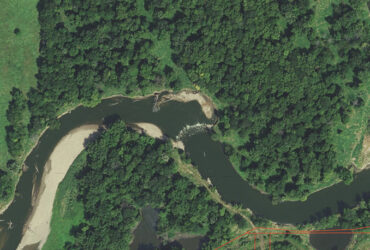
Here is a close up of the secondary channel that separates the mainland from the property I bought. You can see the remnants of a crossing I made to reach the island back in 2007.
In some ways, the island wasn’t a no-brainer, but it had huge potential. The fellow that cut the trees on our Home Farm had once been part owner of the island and told me about the big virgin soft maple trees that grew there.
Generally, soft maple is not a high dollar commercial wood, but if the board footage is high enough (as in the case of a forest that had never been cut) there is real opportunity through taking just the largest trees.
The logger set me up with the current owner of the island, a pawn broker. Like I said, this one had me a little nervous! There definitely are some honest loggers and honest pawn brokers but those two fields are dominated by people who operate in the gray – who look for ways to use their unique knowledge to round off every corner.
I wasn’t 100% sure how to place these two central characters. Plus, I was buying the property for the trees and it was an island. How do you get them off? That also made me a little nervous. Like I said, great potential, but not easy to achieve.
The seller knew that I was buying the island for the trees. He also knew that I would likely resell it in the future, so he was smart enough to keep exclusive hunting rights for the next three years. Though he was not much of a hunter, he had a plan in mind and a shrewd one. More about that later.
The logger, of course, wanted to harvest the trees. We even talked about a strategy. He had a small sawmill; I would not sell him the logs; I would pay to have the trees cut and trucked to his mill and then let him cut the logs into boards which he would then sell on a percentage.
It was a non-traditional approach but one that promised the most possible profit from those maple trees, assuming my logger friend was honest and could actually cut that much timber in a timely manner.
There were other issues with the land. One issue was the fact that the island was landlocked by about 50 yards of property owned by a neighboring farmer.
My attorney was handling the title for me and he was insistent that I do not close without resolving that issue despite the claims from the logger and the pawn broker that it was not a problem.
“The guy is never going to care if you drive across. We have been doing it for years.”
My attorney put the deal on simmer until the seller could come up with a legal easement from the neighbor, which he did, and then the property closed in January of 2007.
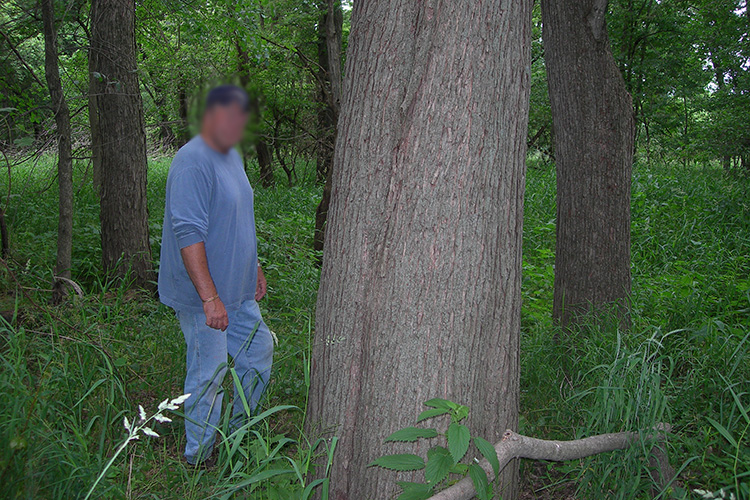
The island had a 25-acre opening in the middle that had been cropland at one time, but it was surrounded by big maple trees. Those trees are what lured me to purchase the property.
To be thorough, I had looked into other options for the timber harvest. As I will discuss in a future blog, it is never wise to rely on just one bid or one plan regarding a big timber sale.
There is too much difference in what various mills will pay for logs to rely on just one possible buyer.
Competition keeps everyone honest. With that in mind, I called a big mill in a city that was near the island. This mill had a large standing order for soft maple with a large casket maker and they had to come up with a lot of board footage each month or lose the order.
It just so happened that this mill was projecting a shortage in the necessary logs in the first half of 2008.
Their timber buyer pushed me to sell the logs to them rather than work with the logger who had brought me the island deal.
This mill was a big operation and the prospects of things happening on time were very good.
Conversely, there was no telling how long it might take to ever get my money from the logs if I had sold them to the original logger with his tiny sawmill. I think that would have been a big mistake.
So, I switched gears and paid the logger who brought me the deal a finder’s fee of roughly 4% and told him I was going to sell my logs elsewhere.
He was not exactly happy, but it was a much better business move for me and he did get a nice payment for basically doing nothing.
The story of the island now moves to the next phase – the timber harvest. But before I get into that, I need to update the story and tell you about a second land business I had gotten into.
We started with the house and 125 acres in September of 2002. Now, it is early spring of 2008. We have 960 total acres scattered across 150 miles of southern Iowa. Roughly 560 of those acres adjoin our house and make up what I call the Home Farm.
I had since refinanced the loan with the private lender to include that with the bank loan I had on the other two properties making up the Home Farm.
We had two other loans applied to the outlying investment properties: the 240 acre tract and the island.
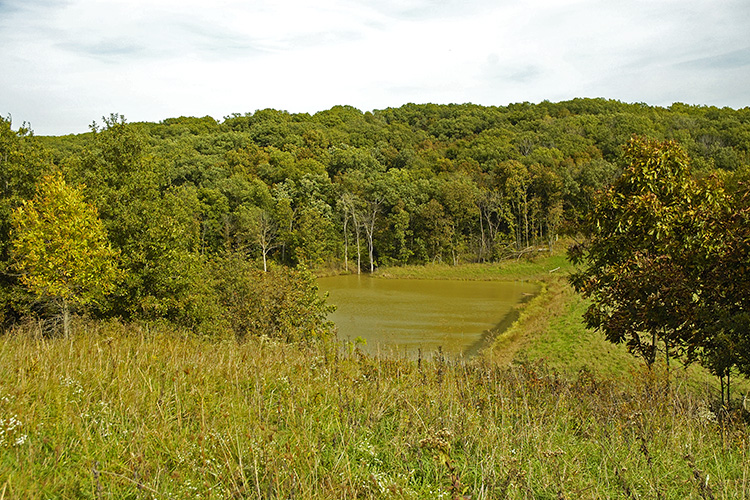
Larry and I owned some really nice pieces of hunting land through our partnership. Larry provided the capital and I provided much of the legwork.
ANOTHER LAND INVESTMENT BUSINESS
Before I go on, I need to take a step back a few months in the timeline to include another story that is fast converging with the dream farm plan.
There was a definite recreational land rush taking place all over the country. The price for hunting land had been relatively low and many, many people – a lot of them investors with an outside interest in hunting – started to jump in to buy it up.
I saw this happening in late 2006 and early 2007. Unfortunately, I was already spread thin – no cash. I knew there was nothing I could do beyond what I was already doing.
Rather than sit back and watch this opportunity blow on by like a ship in the night, I convinced my friend, Larry Kendall, to supply the capital and I would supply much of the legwork.
We formed a land investment partnership.
We started this partnership in early 2007, about the same time I was closing on the 240 acres of timber land and starting on the purchase of the 160-acre island.
What we did, and what we learned with this business, could also fill a book. We were very active searching all the listings in both southern Iowa and northern Missouri for properties that had good value.
We looked at hundreds of properties on-line and probably 20 in person.
Of course, there was much research that went into understanding neighborhoods before we ever showed up to look at a farm. We didn’t buy into any problem areas – no duds allowed.
Through this effort, we bought some really nice farms with Larry’s down payments and bank financing. I think it was around six properties with a total of more than 2,000 acres.
Within our agreement, I would get half of the profit when the properties sold. Larry didn’t pay me a dime if we didn’t make money.
If you have been following the financial cycles, you know what happened in mid-2008 – the start of a massive recession.
We felt it coming; there were less people calling about land and the realtors we talked to reported a noticeable drop in activity in early 2008.
Our portfolio contained only really good properties, and though we sold a few along the way, Larry decided to hold on and not try to dump the properties into a market that was fast losing buyers.
This second investment business plays into my next big purchase.
BUYING OUR SEVENTH PROPERTY
Remember that I said I was out of cash? I think the bank would have kept lending me money – refinancing what I already had and letting me keep going. In fact, I know they would have because my banker said so.
But, by early 2007 I was starting to get a bit nervous with the amount of debt we were carrying. I didn’t want to push it any farther despite the bank’s readiness to lend.
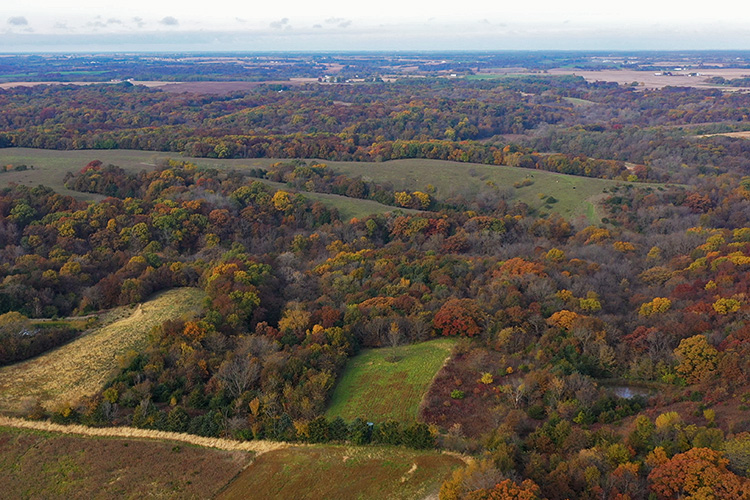
The seventh property that I purchased was another gorgeous piece. However, this one was right next to our Home Farm and added 400 more acres to our total. But before our names went on the deed, I had to sell the two outlying investment properties.
Hindsight is 20/20, but if I had pushed on to buy one more piece I would have done really well. That one was a 240-acre pasture with two large, wooded draws. That property laid next to the 240 acres of gorgeous timber I had bought an hour west of our home.
That pastureland had some nice flat ridges that would have supported row crops very well and those draws were natural deer travel routes coming off my 240. I could have done a lot with it.
It was a diamond in the rough – a great hunting property though it didn’t look like one yet.
The kicker is that it was priced as pasture, not as hunting property or even farmland. The seller would take $1,300 per acre at the same time that I had just paid $1,600 per acre for the timber land next to it.
In hindsight, I should have bought it, but I let it pass. I thought I already had enough on my plate.
During that same time, a fellow that owned 400 acres next to our home farm decided to sell it. I had been asking him for a couple of years if he would sell and he never really showed any interest.
Then all of a sudden, in early 2007, he was ready to sell.
Again, Pam and I were maxed out with debt. We didn’t have any more cash and didn’t want to hit the bank for creative financing, so I searched for a different solution.
I knew that at some point I would sell the 240 acres of timber and the 160-acre island – my investment properties. I just needed to work through the timber sales on both and to improve them with trails and food plots to increase their value – to polish the diamond.
What I really needed was to stall the purchase of the 400 acres by at least a year. However, I didn’t believe the seller of that property would give me that kind of time.
My friend Larry Kendall stepped in again. I talked Larry into buying the 400 and selling me an option to purchase it from him within two years.
The price I was to pay Larry went up 6% per year and I had to give him a brand-new Kubota side-by-side UTV to cement the deal. I am laughing even as I write this.
Larry was awesome to work with, but that was a really good property too. I don’t think Larry was hoping I would fail to execute on the option, but I also don’t think he would have been too heartbroken if he had ended up with the 400 acres.
But we did pay top dollar for it. I believe Larry paid around $2,200 per acre back in early 2007. That was a lot of money for recreational land at that time!
So, I had my hooks into another 400 acres right next to the Home Farm. I just needed to get busy and execute those timber sales and land improvements on the outlying properties so I could get those sold.
I would then move the equity through 1031 tax exchanges from those properties into the 400 acres Larry was holding.
In other words, those two outlying investment properties would finance the 400 acres that bordered the home farm. On paper, it was a good plan, but far from completed.
In the next installment of this series, I will get into the timber sales (both were very creative and ended up being profitable). You can read Part Four here.

Do you think if Larry was not in the picture that your view of a dream farm would have changed? I believe you would have found other ways, but would you have been happy with a smaller size? I think many people would have been happy with the original 125 acres and home. What was your goal (in terms of acres) when you first purchased the home and 125 acres?
I wanted to own as much as possible at first but then over time I lost my appetite for more. 1,000 acres takes a lot of time manage well. If I had kept buying I could have had close to 2,500 acres more or less contiguous by the time we eventually sold. Not sure how I would have afforded it but I am guessing that if I had wanted it badly enough I would have figured something out.